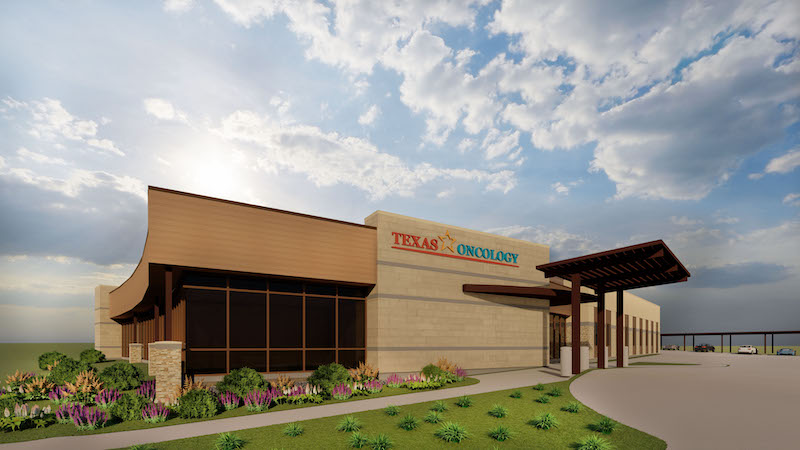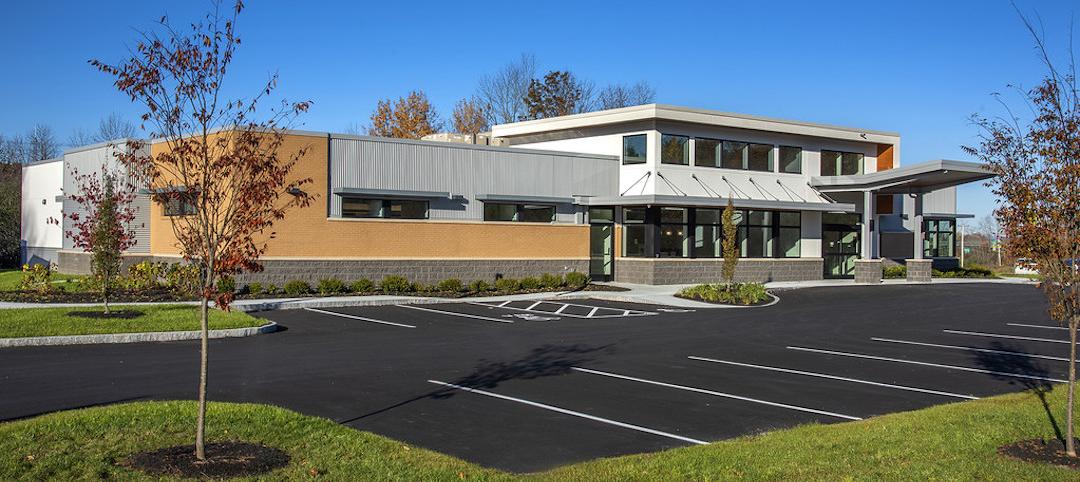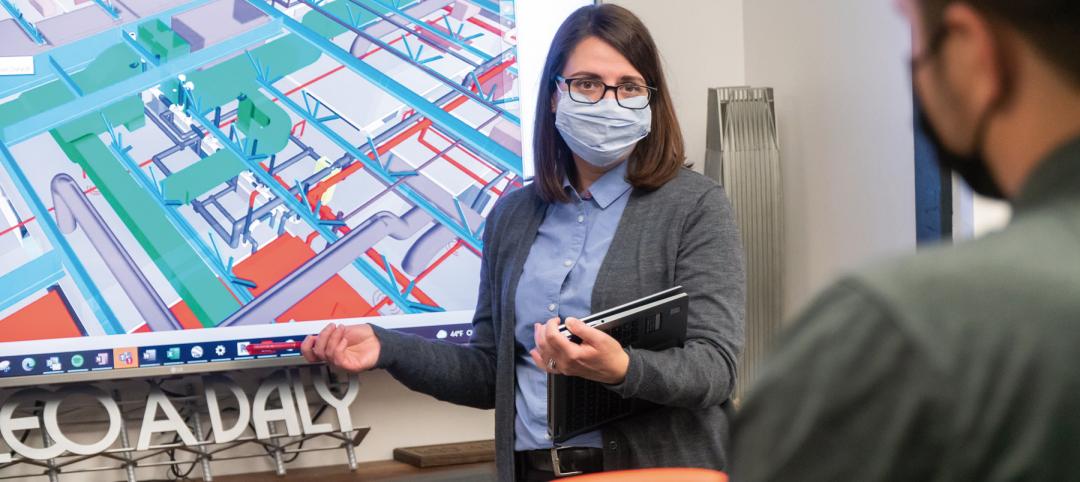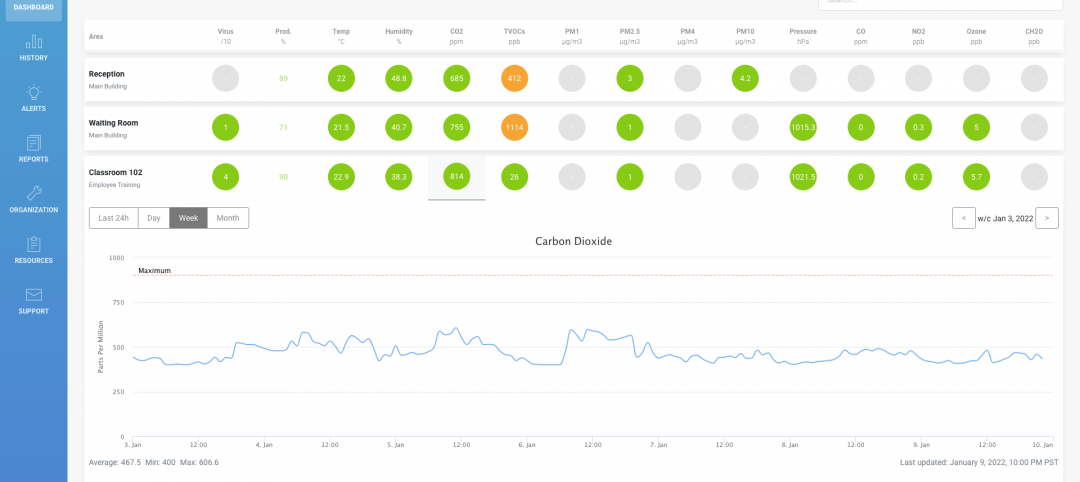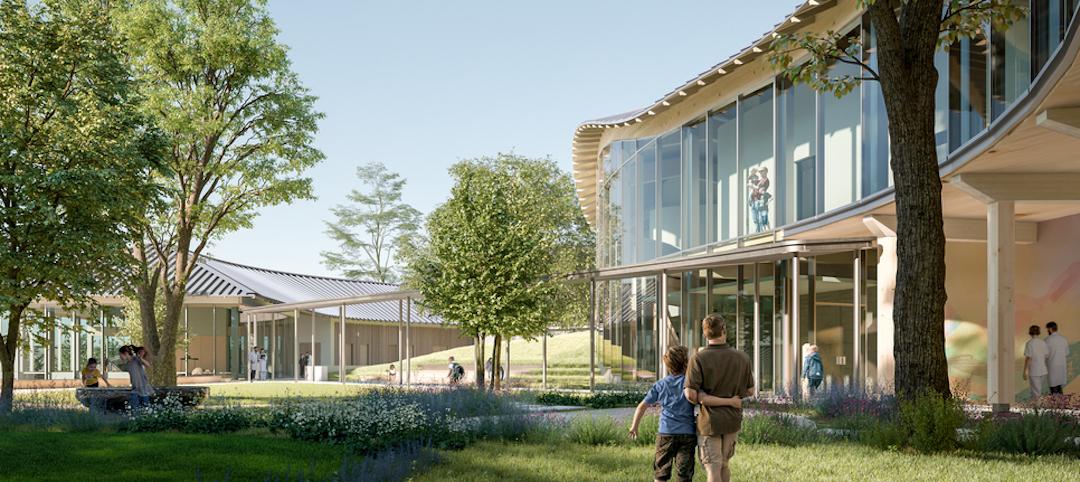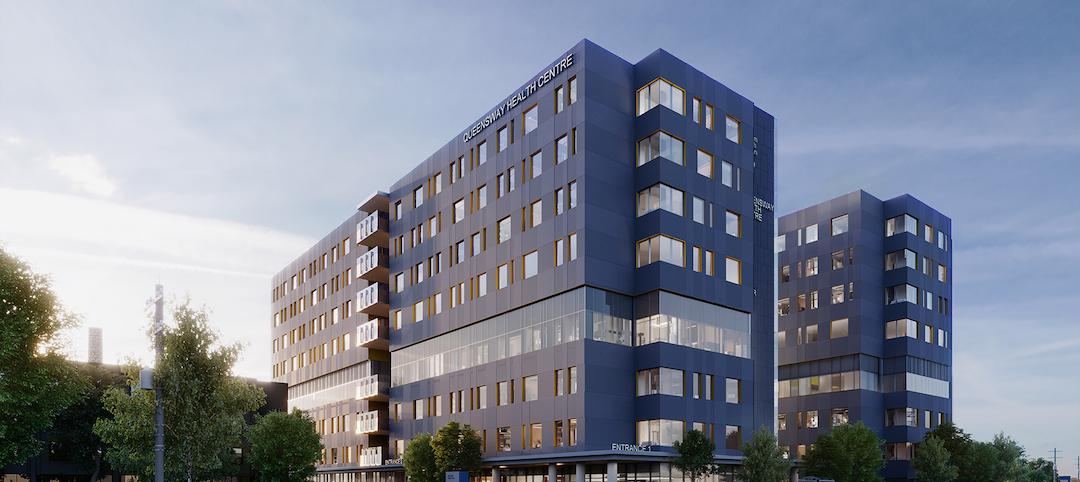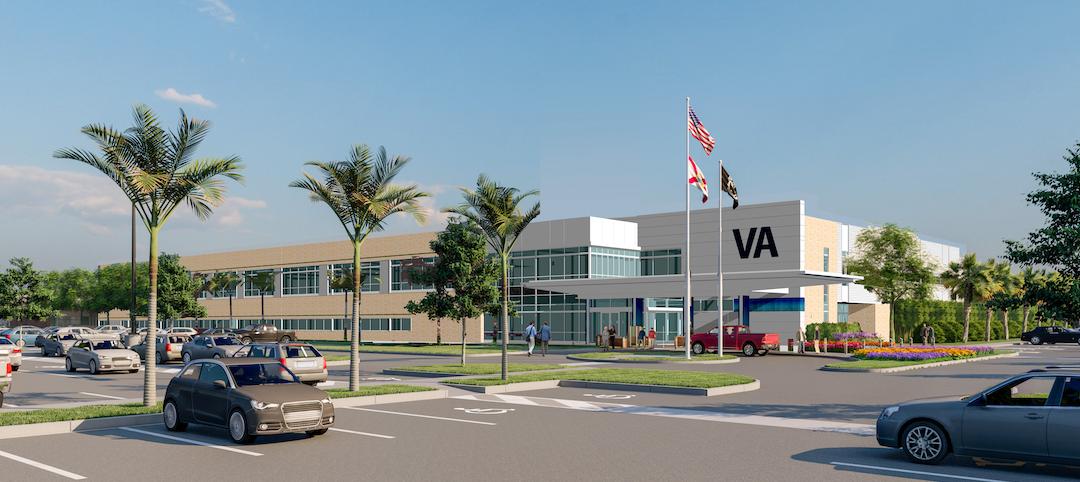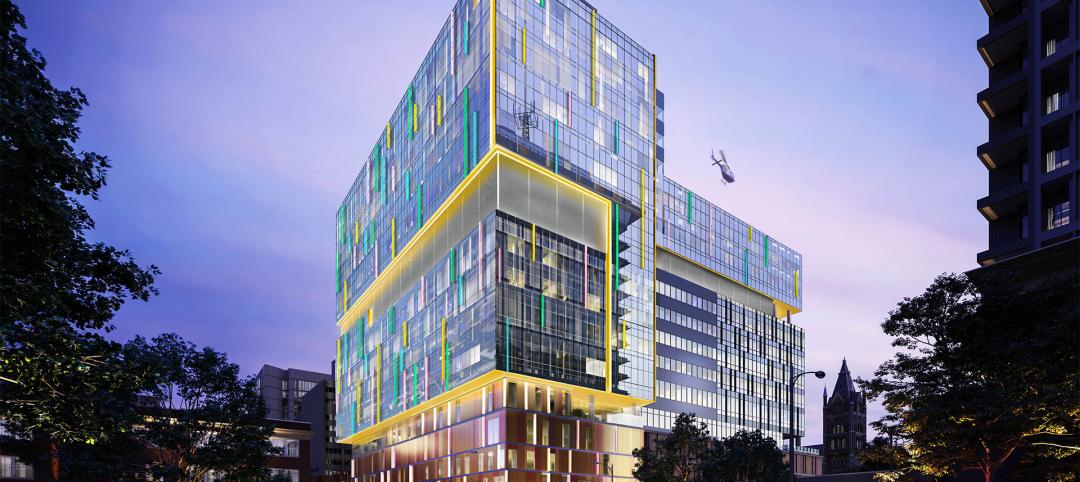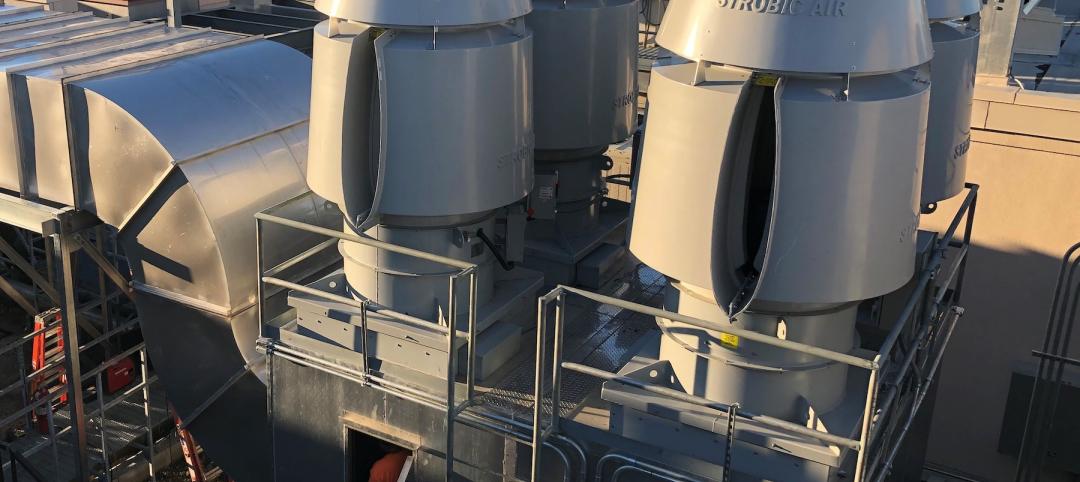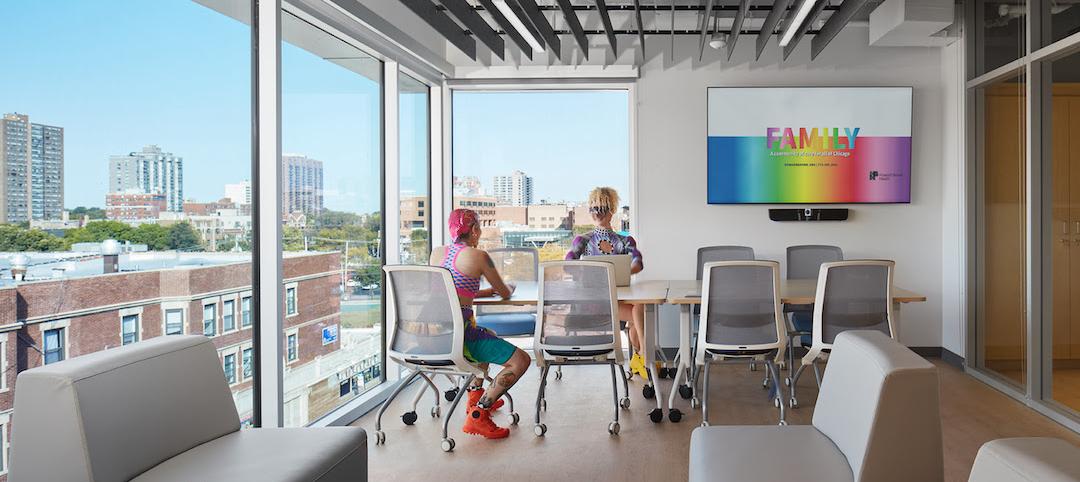While Texas’s cancer rate per 100,000 residents is among the lowest in the nation, more than 133,730 Texans will be diagnosed with cancer in 2021, including nearly 21,000 new breast cancer patients, according to The American Cancer Society’s estimates.
To expand access to comprehensive cancer care, Texas Oncology—with 500-plus physicians and 210 locations across the state—recently broke ground on a 22,300-sf cancer care center in Fort Worth’s Alliance Town Center. When it opens next year, the cancer center will provide medical oncology, hematology, radiation oncology and infusion treatments.
“The development of this new cancer care facility confirms our commitment to providing innovative comprehensive, and individualized care for patients across Texas,” says R. Steven Paulson, M.D., president and chairman of Texas Oncology.
AGGRESSIVE GROWTH
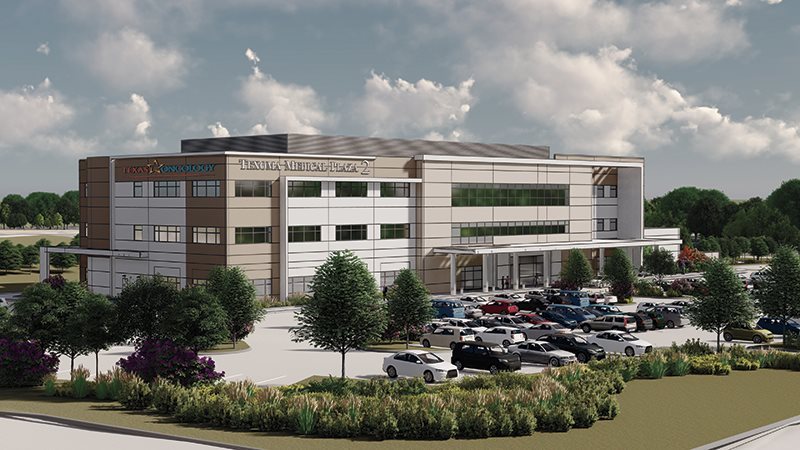
The recently opened cancer care center in Denison, Texas, consolidates two older facilities.
The building will replace an existing Texas Oncology site in Keller, Texas. The building team executing this project includes the developers Hillwood and Meridien, architects Corgan and E4H, and the general contractor DPR Construction.
Last month, Texas Oncology consolidated its locations in Sherman and Denison, Texas, into a new 26,000-sf cancer care center in Denison, with an integrated team of six physicians and more than 85 support staff. And in April, Texas Oncology and Christus Health broke ground on an 85,000-sf Northeast Texas Cancer and Research Institute in Tyler, Texas, with an anticipated 2022 opening. The Tyler facility will include 30,000 sf of clinic space and nearly 3,000 sf for research. Christus Health will house a 7,500-sf advanced imaging center. Another 10,000 sf will support the surgical oncology programs of the Louise Herrington Cancer Center.
Related Stories
Healthcare Facilities | Feb 15, 2022
New outpatient ophthalmology surgical center opens in Newington, N.H.
JSA Design designed the project.
Resiliency | Feb 15, 2022
Design strategies for resilient buildings
LEO A DALY's National Director of Engineering Kim Cowman takes a building-level look at resilient design.
Healthcare Facilities | Feb 10, 2022
Respite for the weary healthcare worker
The pandemic has shined a light on the severe occupational stress facing healthcare workers. Creating restorative hospital environments can ease their feelings of anxiety and burnout while improving their ability to care for patients.
Coronavirus | Jan 20, 2022
Advances and challenges in improving indoor air quality in commercial buildings
Michael Dreidger, CEO of IAQ tech startup Airsset speaks with BD+C's John Caulfield about how building owners and property managers can improve their buildings' air quality.
Healthcare Facilities | Jan 7, 2022
Supporting hope and healing
Five research-driven design strategies for pediatric behavioral health environments.
Healthcare Facilities | Dec 20, 2021
Stantec will design the new Queensway Health Centre
The project is located in Toronto.
Healthcare Facilities | Dec 16, 2021
Leo A Daly designs mental health clinic for veterans in Tampa
The new facility will consolidate all mental health services the VA offers into one clinic.
Healthcare Facilities | Dec 15, 2021
COVID-19 has altered the speed and design of healthcare projects, perhaps irrevocably
Healthcare clients want their projects up and running quicker, a task made more complicated by the shortage of skilled labor in many markets.
Healthcare Facilities | Dec 15, 2021
MEP design considerations for rural hospitals
Rural hospitals present unique opportunities and challenges for healthcare facility operators. Oftentimes, the infrastructure and building systems have not been updated for years and require significant improvements in order to meet today’s modern medical demands. Additionally, as these smaller, more remote hospitals are acquired by larger regional and national healthcare systems, the first step by new ownership is often to update and rehabilitate the building. But how can this be done thoughtfully, economically, and efficiently in ways that allow the engineering and facility staff to adapt to the changes? And how can the updates accurately reflect the specific needs of rural communities and the afflictions with which these areas most commonly face?
Healthcare Facilities | Dec 7, 2021
Wheeler Kearns Architects completes Howard Brown Health’s Broadway Youth Center in Chicago
The new facility will provide medical and social service programs to LGBTQI+ youth.


